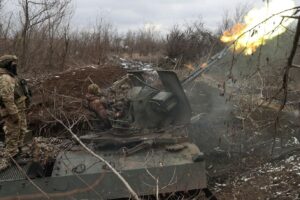Gaza’s truce is unlikely to last significantly beyond Tuesday, with Israel’s military stepping up pressure on Sunday to restart the air and ground offensive in a campaign that some experts predict could run into next year.
The four-day halt in fighting, described by the Israel DefenceForces (IDF) as “an operational pause”, is scheduled to end on 7am on Tuesday if the agreed transfer of 50 hostages held by Hamas and others in Gaza goes to plan.
There is an expectation in many quarters that the pause will be extended for a few days, and the current agreement allows for an extra day’s truce for every 10 hostages Hamas is willing to release.
It is estimated there were another 40 children and women who are not soldiers and who were not covered by the initial agreement, giving scope for more phased releases, although not all the hostages are under the direct control of Hamas, but instead Palestinian Jihad or other smaller armed groups.
That may lead to several days of extensions, but the IDF has been unambiguously signalling its desire to restart the military campaign. It’s head, Gen Herzi Halevi, put out an uncompromising message to all of the country’s soldiers on Sunday morning.
He described meeting many of them after long hours of combat: “I saw reflected in your eyes the magnitude of the moment, the fighting spirit and determination to achieve all the objectives of the war. I heard you tell me: ‘We want to fight until we return the hostages.’ And so we are doing just that.”
Any restart of the war will have disastrous consequences for Gaza’s civilians, already suffering an extreme humanitarian crisis. They represent the overwhelming majority of the 13,000 people killed in the seven-week-long war, a figure roughly comparable with the 12,000 recorded as having been killed in Iraq by Iraq Body Count in 2003, the year of the US-led invasion.
“I can’t see the truce lasting more than a week,” said Miri Eisin, a former Israeli military intelligence specialist who runs the International Institute for Counter-Terrorism. “The IDF wants to dismantle Hamas’s terror capability and military capability, and the only way to do that is through a systematic and careful ground operation.”
Israel’s military estimates it has killed between 1,000 and 2,000 Hamas fighters out of a military force it believes is about 30,000 strong. The country’s prime minister, Benjamin Netanyahu, has pledged to eliminate the group, but Hamas remains a coherent fighting and political operation able to negotiate over hostages.
As of Friday, when the truce began, the IDF had surrounded the northern part of the Gaza Strip, although pockets of resistance remain, after an intense bombing campaign. Footage of the Jabalia area on Sunday morning revealed an urban wasteland, while satellite analysis suggests 40-50% of buildings in northern Gaza have been hit.
The IDF’s next focus is the south, to where Palestinian civilians were supposed to flee, and in particular Khan Younis, the city where Israel believes Hamas’s headquarters and leader, Yahya Sinwar, are located. Last week, Israel called for civilians, many already displaced once, to leave the city. It hopes people will go west to the small, already crowded Al-Mawasi area on the coast.
Any decision to restart the war lies with Israel’s war cabinet led by Netanyahu, who pledged to rightwing coalition partners last week that it would resume once the 50 hostages had been released in order to sell them the deal. “I want to be clear. The war is continuing,” he said on Wednesday.
From this perspective, the central issue is Israel’s discussions with the US about how it would conduct the attack on Khan Younis it believes is necessary. Jake Sullivan, the US national security adviser, said on Sunday that the White House was having “a constructive conversation” with Israel about ensuring that “any military action only takes place after civilians have been accounted for”.
It is unclear whether a military attack on Khan Younis could meet such goals, or indeed whether it is practical in such a crowded area as Gaza, where 1.7 million out of 2.3 million people have already been displaced. But if it does go ahead on Sullivan’s terms it is likely to be slower moving, perhaps with less use of air power, and so longer.
Eisen argued that to meet the goal of eliminating Hamas, Israel would have to occupy Khan Younis. “It will not take 10 days or two weeks. It could be another month or two, so it won’t be as the British might have said, be over by Christmas, unless you reach a tipping point where Hamas puts down its arms and gives up.”
For now, all the signs point to the fact that Israel believes a military victory is possible. HA Hellyer, a Middle East expert affiliated to the Royal United Services Institute, agreed it would be possible to cripple Hamas, but difficult to wipe out the organisation completely. “The question is what price will be visited on the population writ large. And that price is not euphemistic. We have already seen horrific levels of civilians being killed,” he said.
Source: The Guardian











